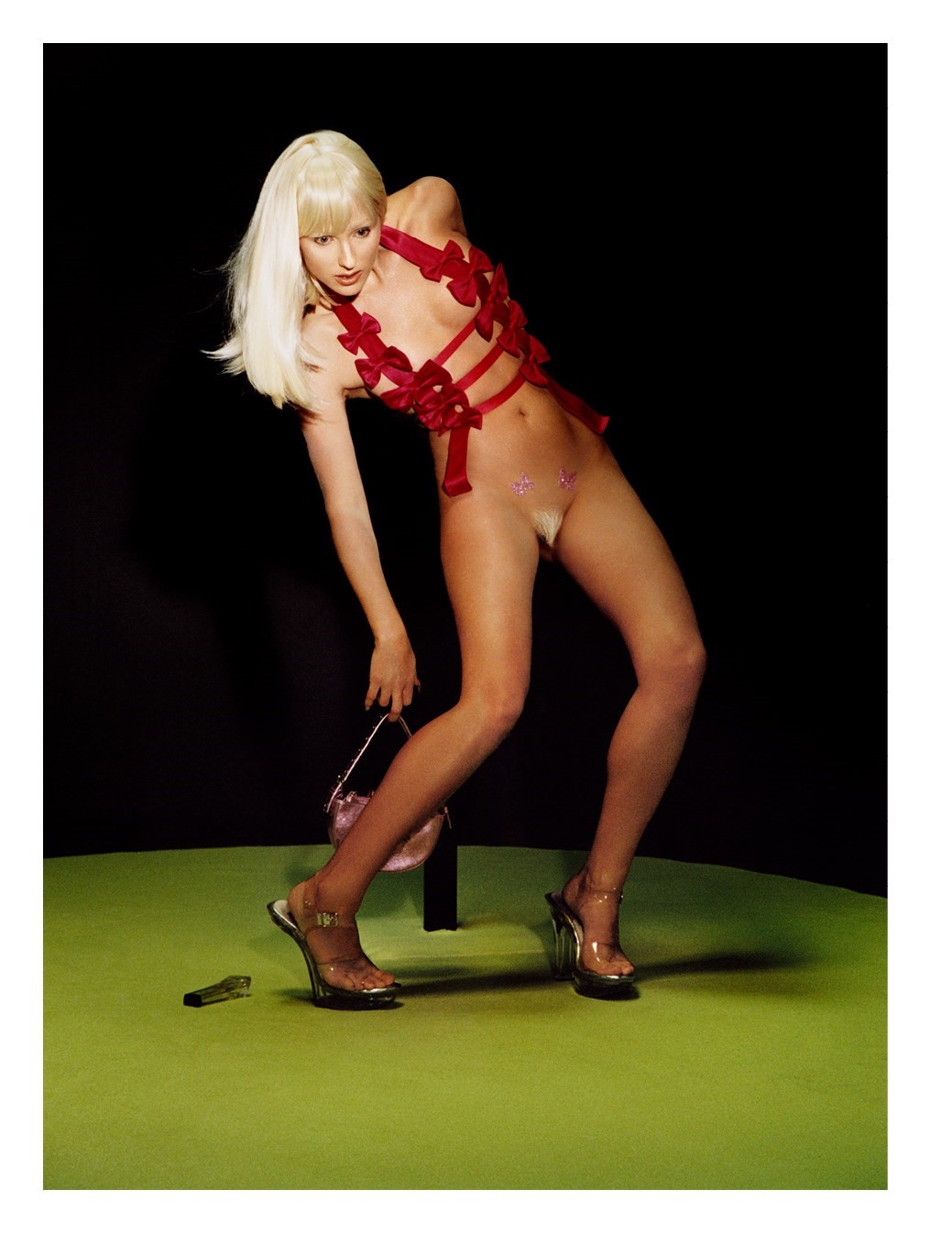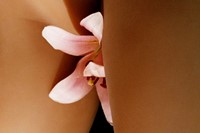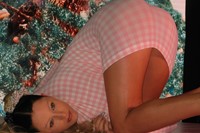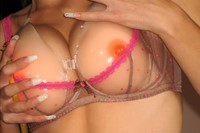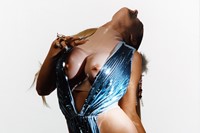Harley Weir is finally ready to show herself to the world. Despite her status as one of the world’s most sought-after image-makers – lauded for her delicate, sensual and empathetic images of nature, bodies and sex organs – Weir has managed to maintain a certain level of mystique; no mean feat in today’s hyper-self-conscious, social media-obsessed culture. “It’s almost like you don’t exist if you don’t post images of yourself on Instagram,” she says over a fuzzy phone line from an airport in Madrid.
Her new photo book – published by Beauty Papers and “dedicated to all the dolls in the world” – marks the first time Weir has ever turned the camera on herself, and she feels anxious about that moment of reveal. Dressed up in different guises both masculine and feminine – in stripper heels, a latex gimp suit, or a Jean Paul Gaultier trompe l’oeil men’s suit – Weir’s unnerving, provocative self-portraits belong in the lineage of Cindy Sherman and Gillian Wearing; women artists who have probed and prodded at the politics of identity with their unsettling self-portraits, which tackle themes of pornography and sexuality, womanhood and fashion.
Weir’s new project, which features numerous pictures of sex dolls, addresses many of the same issues – the main one being: how can you be yourself in a world where beauty standards are becoming increasingly fake? “The women that are at the forefront of this generation are beginning to look like sex dolls,” she says, and it’s true; just think of the impossibly manicured, flawless facades of Kim Kardashian, Kylie Jenner and Ariana Grande, and the concurrent rise of body dysmorphia and plastic surgery. The sex dolls and self-portraits in Weir’s book, however, are not perfect – high heels are snapped off, fake tears leak from the dolls’ eyeholes, and tampon strings are visible. “It’s about the idea that beauty is so artificial now,” she explains. “I think imperfections are sexy. Grotesqueness should be a part of beauty … it’s all connected.”
Violet Conroy: How did the idea for this book first come about?
Harley Weir: I’ve never really done a self-portrait project in a fashion sense. There’s so much pressure from social media – we have to quantify and justify ourselves through images. I felt that pressure from current culture to use my image in some way, and it kind of felt like the right time.
“It feels OK to be a woman now, but when I was younger, stereotypical feminine traits were not going to get you a job” – Harley Weir
VC: So you were reluctant to put your image out there.
HW: This will be the first time I ever post a picture of myself on my Instagram, which is quite scary for me. I’ve been anxious about that moment. Within the current culture, it’s almost like you don’t exist if you don’t post images of yourself on Instagram.
Growing up, I didn’t want to use my image on social media because I didn’t want people to judge the way I look before they judge my work – especially being a woman, you get judged quite heavily on your appearance so I always refrained because I wanted my work to come first.
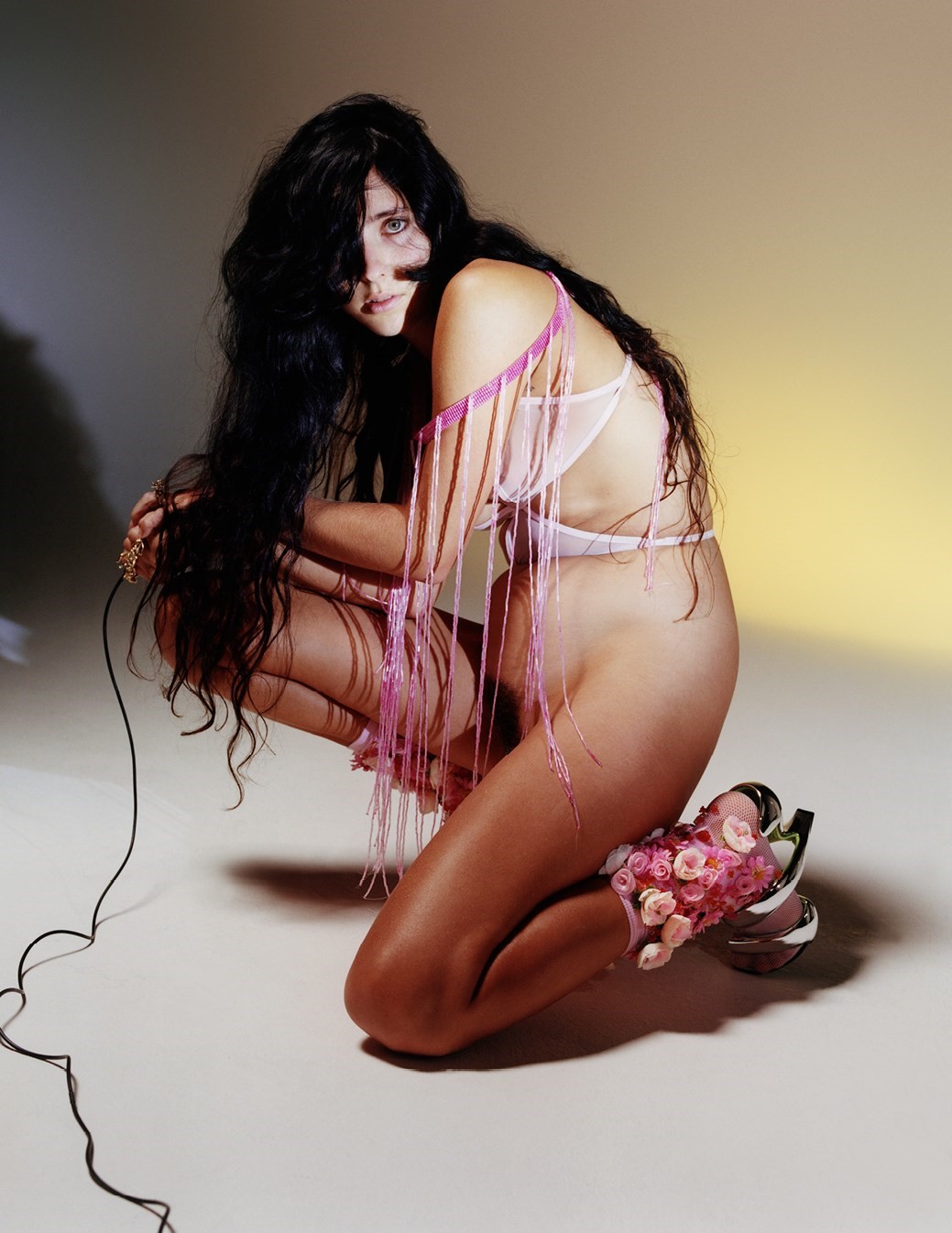

VC: What finally made you want to put yourself in the work? Were you feeling more brave in that particular moment?
HW: I guess I must be feeling more confident, but I’m not sure why. I think it’s because it feels OK to be a woman now, but when I was younger, stereotypical feminine traits were not going to get you a job. Because I have a unisex name, I feel like it benefited me in the beginning to not show my appearance online.
VC: When you say it’s OK to be a woman now, why do you think that is?
HW: It’s a lot more liberating within imagery now. Things are becoming more equal, especially in the fashion industry. Gender is more fluid. We’ve come a long way in the past ten years and it finally feels like [it’s] not a sin to be feminine. I definitely dressed more or less like a guy for about ten years throughout my twenties. It felt like I wouldn’t be respected if I dressed like a stereotypical woman within my field.
Feminine traits are more valued now. When I was younger, having your makeup and nails done reduced your look of intelligence. At the moment, I feel like beautification – I don’t necessarily agree with it all – but it’s more of a standard and acceptable. It’s even moving into masculine worlds as well. Those things are not as taboo as they used to be. Once upon a time, it was very embarrassing to wear a pink or to be very ’girly’. It feels more acceptable now, being accepted as a woman in a professional job.
VC: When did you first become interested in the idea of playing a character and dressing up?
HW: Fashion was interesting for me when I first started because it felt like a way to understand the feminine stereotypes. It was interesting when I started to act out these stereotypes within my work; [in the book], I go from [being] myself, relatively real – I have my pot belly out and everything – all the way into [being] a doll, with all the variations of beautification and artificiality.
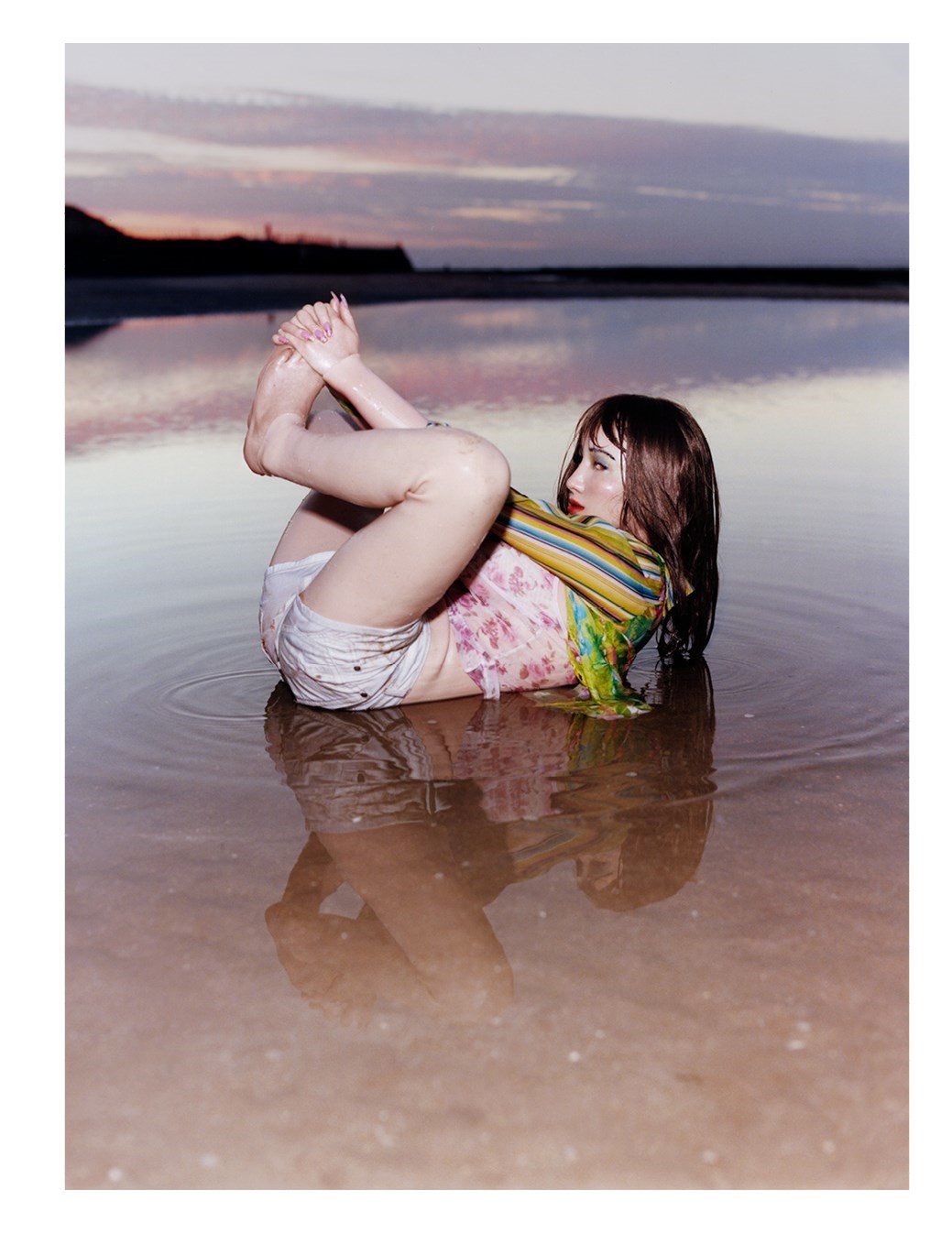
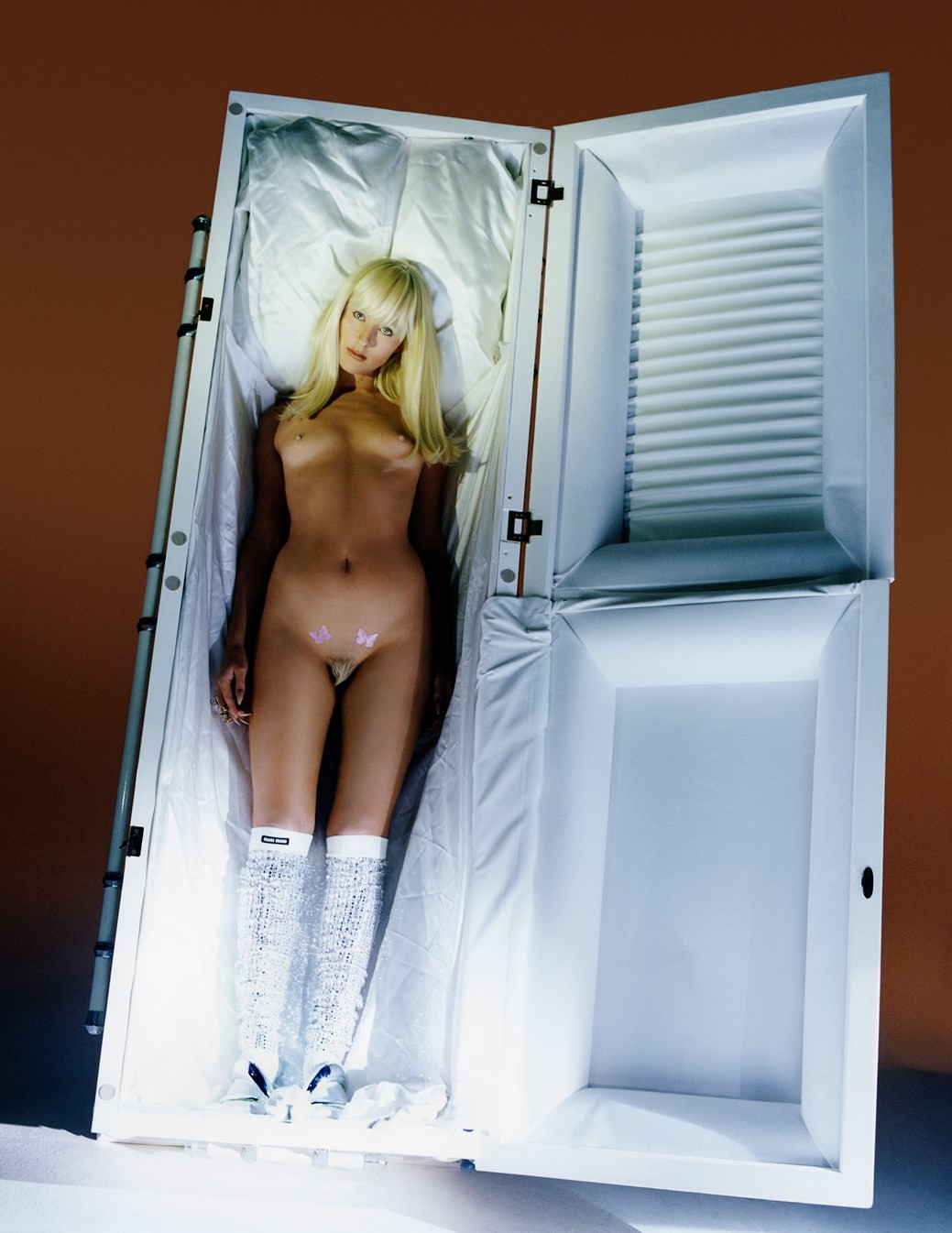
VC: Tell me about the choice to use sex dolls in the work.
HW: One of the main reasons why I used sex dolls is just because I had one lying around from a previous shoot. But also in current fashion, the women that are very much at the forefront of this generation are beginning to look like sex dolls. There’s this idea of turning yourself into a sex doll, getting surgery.
VC: Do you think the rise of beautification and sex dolls has made women feel more pressure to look a certain way?
HW: A lot of good change has happened. For example, in the past, [the standard] was to look like a blonde undernourished child, and now it’s OK to be a woman, to be big and to be curvy. Whether it’s just a trend or not we’ll see, but it does feel like we’ve come a long way. With the idea of surgery, and how famous people look now – it’s so artificial. It’s about the idea that beauty is man-made and artificial now.
“The women that are very much at the forefront of this generation are beginning to look like sex dolls” - Harley Weir
VC: So much of your work in the past has gone against the artificial nature of beauty. Why are you focusing on this artifice now?
HW: That’s what current society sees as beautiful. Also, there’s so much pressure when you go on Instagram to look a certain way, to have your lips done, to have your boobs done, to have your butt done, to have this crazy tiny waist. The ideals are extremely warped. I feel pressure whenever I look at Instagram: ‘oh, maybe I should get my lips done. Maybe I should get my eyes pulled back.’ I think that pressure led me to want to see how it would look. It’s tempting, you know? Every day, if you go on social media, you’re inundated with pictures of hot girls that have had surgery. They constantly come up on my feed. It definitely isn’t good for one’s self-confidence. I wanted to show that transition, and show how much makeup and things like that can transform you from what is essentially real into what everyone else looks like on Instagram.
VC: I’d love to talk more about this idea of transformation – what was the process like of dressing up as these characters and wearing these amazing clothes?
HW: I feel like I didn’t even go as far as I would’ve liked to, but it was great fun. I felt like I could go a little bit further because it was my [own] body that was at stake rather than somebody else’s. I would’ve gone much further if it wasn’t for the fact that I was slightly embarrassed of my poor assistants having to photograph me in such ways [laughs]. It felt exciting to not have to worry about hurting someone’s identity and to be able to dive straight in and be as aggressive with the imagery as I needed to be.
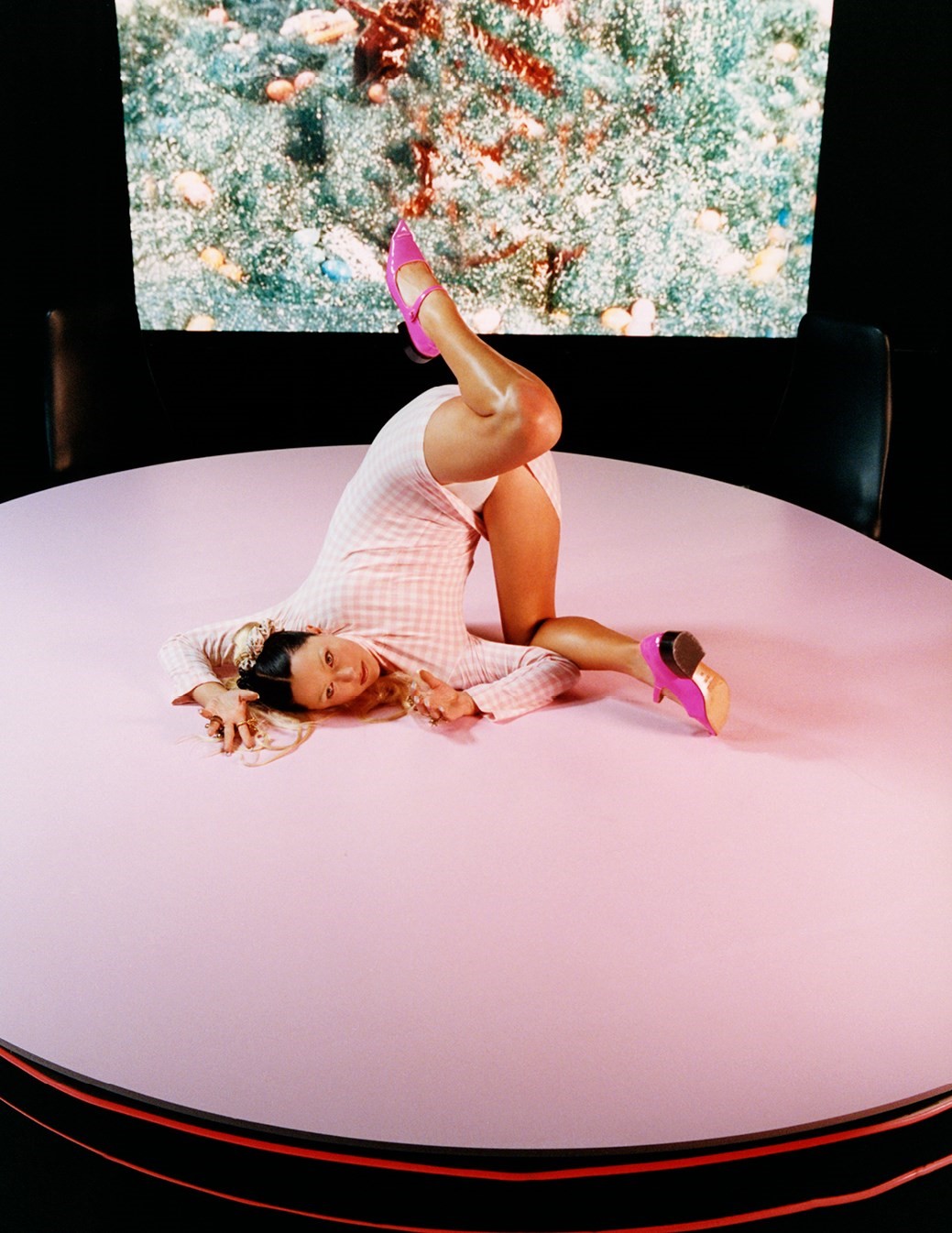
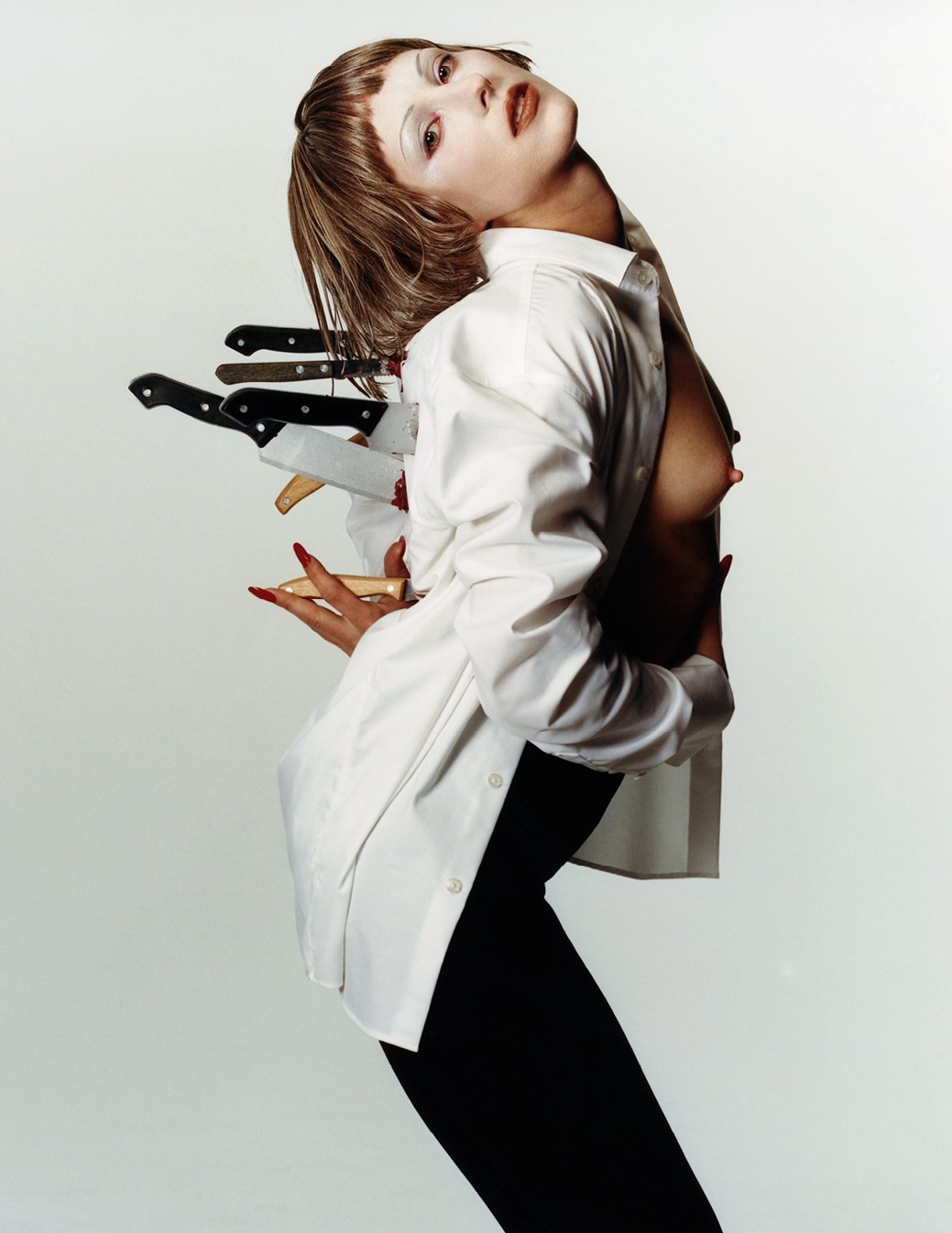
VC: Did it feel liberating to dress up as other people?
HW: I’ve always loved dressing up. It was a big part of my life growing up, my mum had a big dressing-up box and I’d try on all the clothes. [Shooting the book] was like playing again, like you do as a child.
VC: There’s an episode of Nathan For You where the American comedian Nathan Fielder dresses up as someone else and says that he feels so much happier wearing someone else’s skin. Can you relate to that?
HW: There is definitely something freeing in dressing up as someone else. I think that’s also why a lot of people have a big obsession with makeup and putting on a mask. It does give you freedom in a way.
VC: You play so many different characters in the book, from hyper-femme to super masculine. Is gender something you’re interested in exploring in your work?
HW: Definitely, gender is always there. I like to do accents a lot, and I have quite a few male characters that I like to do. I have quite a strong male side to me. I do believe that if women were more in touch with their male side and if men were more in touch with their female side the world would be a better place.
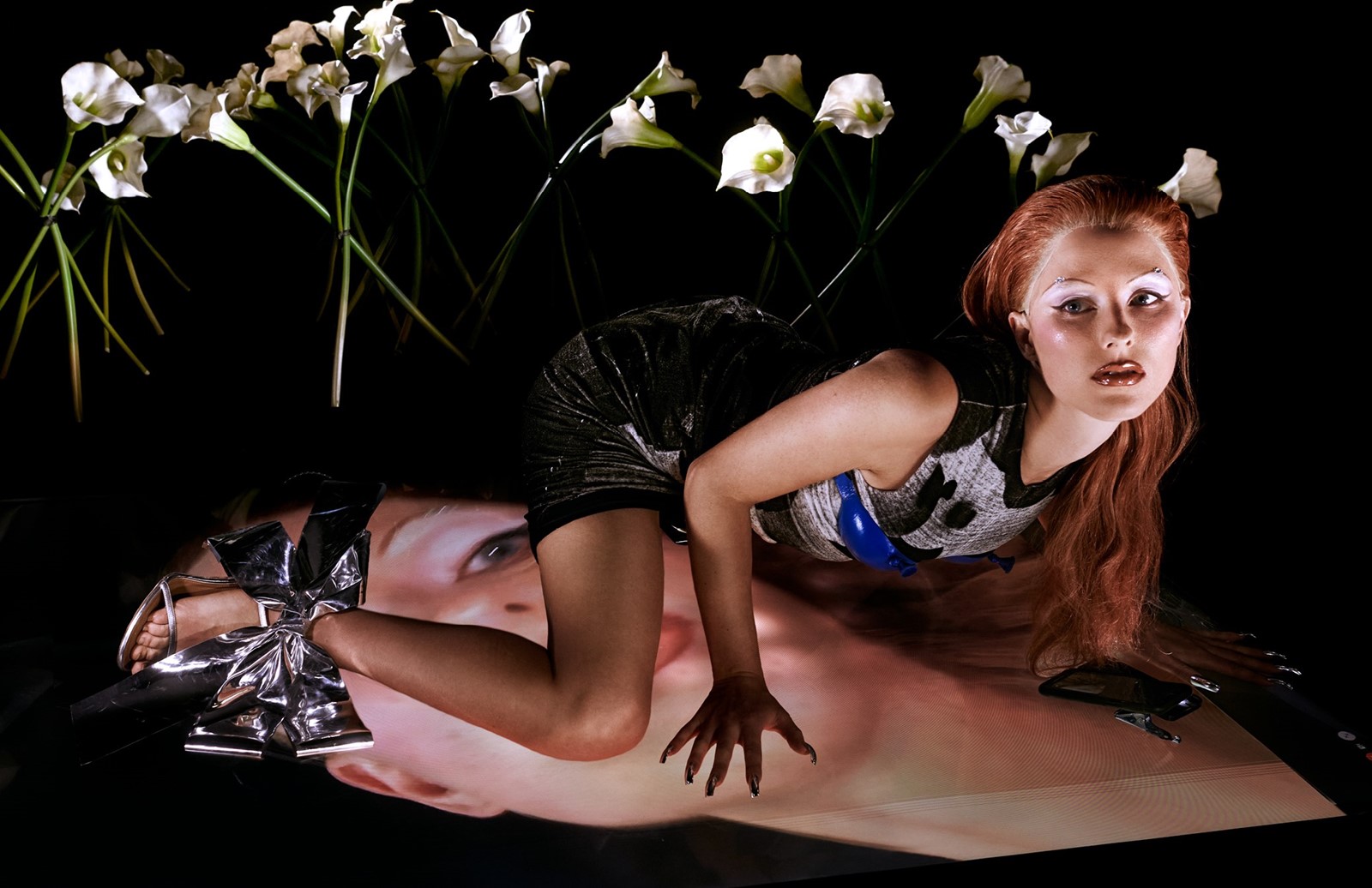
VC: Imperfection is a really important part of this book. Even though you’re taking pictures of ‘perfect’ sex dolls, their heels are snapped off and some of them even cry. Is it important for you to show women as they really are, in all their grotesqueness?
HW: Yeah, definitely. I love the idea that high heels are like modern day foot binding, because if you’re walking home late at night wearing silly shoes you’re not going to be able to run from a predator. You’re becoming an easy target. I always think about how high heels are actually a hindrance to your power, yet you feel taller and stronger, but you actually become weaker and more fragile.
“There’s so much pressure when you go on Instagram to look a certain way, to have your lips done, to have your boobs done, to have your butt done” – Harley Weir
VC: In your work, beauty always seems to be intertwined with the grotesque. Do you think beauty is boring without an element of darkness?
HW: I think imperfections are sexy. Grotesqueness should be a part of beauty. It’s all connected.
VC: Are you going to put yourself in your own work more in the future?
HW: It’s really hard work. I have a lot of gratitude for models. Also, everyone pitched in on set and took pictures of me, from the production team to the makeup artists, so the pictures are a huge collaboration with everyone. I probably won’t do it again for a while.
Harley Weir Beauty Papers is published by Beauty Papers and distributed by IDEA.
